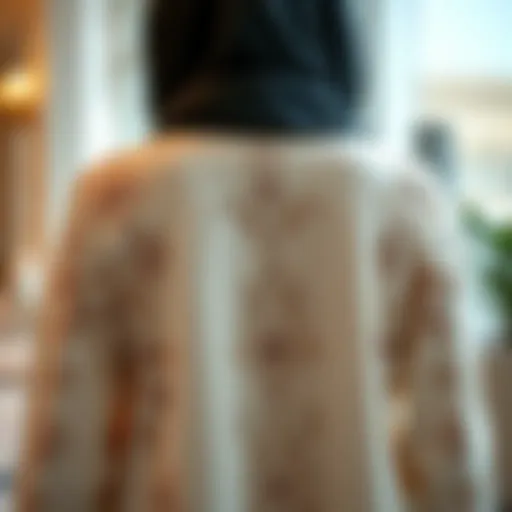Current Price Trends of Silver in Dubai
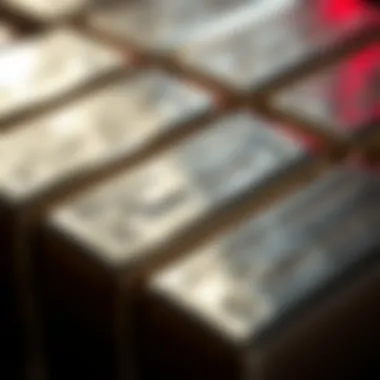
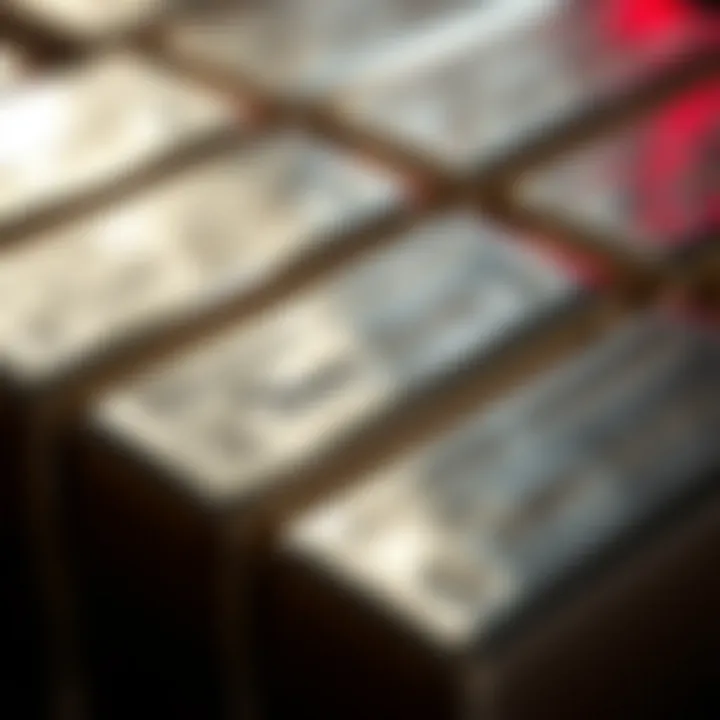
Intro
The silver market in Dubai has gained considerable attention over recent years due to its fluctuating prices and distinct dynamics. Understanding these trends is crucial for investors, buyers, and anyone interested in this precious metal. Knowing what drives the price of silver can not only improve your buying decisions but can also guide long-term investment strategies. As the sun sets over the towering skyscrapers of Dubai, the story of silver is one of both history and potential wealth.
Market Trends
Current Price Movement
As of today, the price of silver in Dubai is often quoted per gram, making it easier for not just investors but also everyday buyers to gauge its value. The local market typically reflects global trends but is also influenced by the unique economic circumstances surrounding the UAE. For instance, prices may increase during peak tourism seasons or during significant cultural events, reflecting heightened consumer interest.
Local dealers frequently adjust their prices, reflecting both international rates and local demand. At times, you might notice that silver prices in Dubai can diverge from those in other markets around the globe, largely due to import tariffs or local preferences.
Global Influences
Several factors play a role in determining the price of silver within Dubai's market. For instance, international demand, particularly from industrial sectors such as electronics, can cause local prices to surge. Additionally, fluctuations in the value of the US dollar have a direct impact on silver pricing. As the dollar strengthens, silver can seem more expensive in other currencies, potentially damping demand.
Economic Factors
The overall economic climate in Dubai also contributes to silver prices. With its ongoing efforts to diversify from oil dependency, the UAE has seen substantial investments in non-oil sectors. This leads to both increased industrial demand for silver and changes in discretionary spending among locals, which affects jewelry purchases—the primary consumer category for silver in Dubai.
"Silver prices reflect not just the raw material cost but the underlying economic sentiment in Dubai and beyond."
Historical Context
Historically, the UAE has served as a significant hub for precious metals trading. How about looking back at the turn of the century? The global economic landscape was such that Dubai's strategic location positioned it favorably for trade. Silver has been traded here for millennia, and its significance continues strong today amid evolving market demands.
Future Projections and Growth Areas
As we look ahead, it’s anticipated that the demand for silver will remain robust, driven by technological innovations and eco-friendly initiatives utilizing silver in solar panels and electric vehicles. This trend could significantly impact future pricing. Moreover, the development of Dubai's financial markets and ongoing infrastructures could generate further interest in physical assets like silver.
Investment Insights
Best Areas for Investment
Investing in silver can be approached in distinctive ways, from purchasing physical silver bullion to exploring ETFs or silver mining stocks. Each choice carries its own risk and reward balance.
For those opting for physical investments, popular options in Dubai include local jewelry shops, markets like the Gold Souk, or accredited dealers who can provide verified silver bars or coins. It’s often said that a good diplomat knows how to assess the room; similarly, an investor must grasp local market conditions before decision-making.
Tips for First-Time Investors
For newcomers to the silver market, here are some handy tips:
- Research is Key: It’s crucial to stay informed on market shifts and global economic news.
- Seek Professional Guidance: If unsure, consider consulting a financial advisor who specializes in precious metals.
- Buy Smart: Don’t rush into a purchase; timing can vary greatly.
- Stay Patient: Silver is often a long-game investment. Expect ups and downs, but remain focused on your long-term goals.
Overview of Silver as a Precious Metal
Silver enjoys a dual identity, regarded both as a precious metal and a widely used industrial commodity. Its presence spans across various sectors, making it not only appealing for investment but also vital for numerous applications in technology and manufacturing. Investors looking into Dubai's silver market should understand these dynamics, which contribute significantly to the demand and pricing of silver.
Characteristics and Uses of Silver
At its core, silver is highly prized for its unique properties. Its luster and malleability allow for intricate designs, making it a favorite in jewelry and decorative arts. Beyond aesthetics, silver's conductivity emerges as a key characteristic, leading to its essential role in electronics and solar panels.
- Electrical Conductivity: Silver boasts the highest thermal and electrical conductivity among all metals. This trait makes it indispensable in the electronics industry, from smartphones to advanced computing systems.
- Antimicrobial Properties: Silver also finds its place in healthcare. Its natural antimicrobial characteristics are leveraged in medical devices and wound treatments, adding another dimension to its significance.
- Industrial Applications: Beyond jewelry, silver is involved in photography, mirrors, and water purification systems. Its versatility underlines its importance in multiple sectors.
Comparative Value: Silver vs. Gold
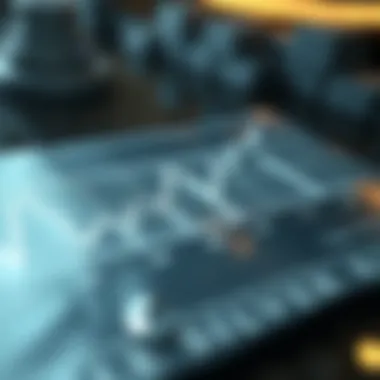
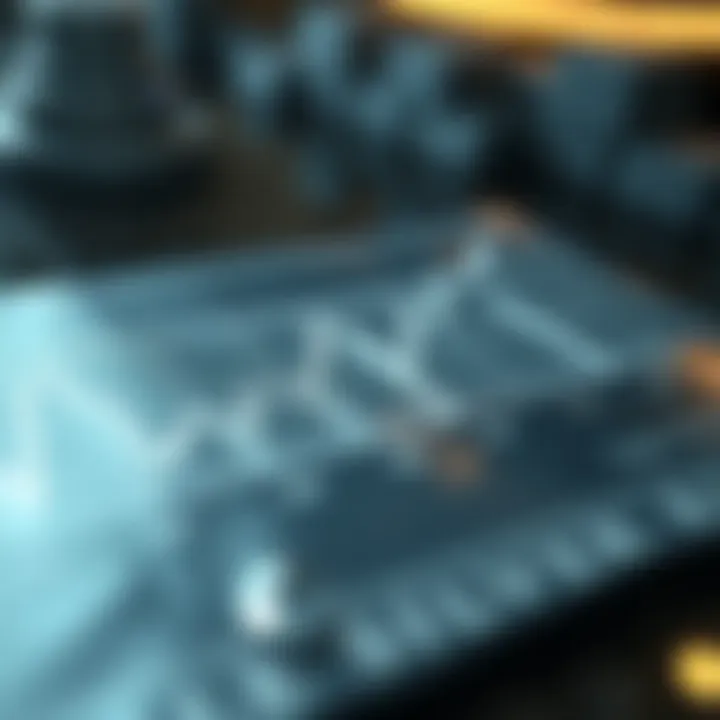
When it comes to precious metals, silver and gold often stand in stark contrast, each possessing unique attributes that cater to different investor preferences and market conditions. While both hold intrinsic value, their pricing mechanisms are influenced by distinct factors.
- Market Perception: Gold is often seen as a safe haven during economic downturns, whereas silver serves as a more accessible entry point for new investors. Many view silver as the underdog in the precious metal arena, which can lead to price fluctuations that differ from gold's.
- Investment Accessibility: Silver generally presents a lower price per ounce compared to gold, making it an attractive option for small-time investors. The ease of acquiring silver in smaller denominations makes it more approachable for those wanting to invest without diving too deep into financial waters.
- Volatility and Returns: Historically, silver has exhibited greater price volatility than gold. While this means potential for higher returns, it also suggests heightened risks. Investors should consider their tolerance for risk, particularly in an ever-changing economic landscape.
Understanding these characteristics, uses, and comparative values will set the stage for delving deeper into the current price trends of silver in Dubai, enlightening potential buyers and investors alike.
Current Price of Silver per Gram in Dubai
Understanding the current price of silver per gram in Dubai is essential for both investors and casual buyers. The silver market functions much like a finely-tuned machine, where multiple variables interact dynamically to influence the price. For investors, keeping a close watch on the per-gram cost provides insight into the potential gains or losses that one may encounter in the precious metals market. It is not just a number; it reflects broader trends in economics, trade, and even consumer behavior.
Those looking to buy silver, whether for jewelry, coins, or investment, should grasp how fluctuations in pricing can affect their purchasing power. This awareness allows individuals to make well-informed decisions about timing their purchases. So, let's delve into the elements that specifically impact the price of silver in this vibrant market.
Factors Impacting Silver Pricing
Global Market Trends
When we speak of global market trends, we are looking at a landscape painted with many colors—the various national economies, trade dynamics, and geopolitical changes contribute to how silver is valued on the world stage. Essentially, the price of silver is not set in a vacuum; rather, it dances to the rhythm of order and chaos found in international markets.
One significant element is the fluctuations associated with demand from industries such as electronics, automotive, and solar energy, where silver's conductive properties make it indispensable. The key characteristic of these market trends is their ability to create volatility; silver can gain or lose value almost overnight depending on larger systemic changes. For example, if there's a surge in solar panel production, the demand for silver will consequently escalate, resulting in increased pricing.
This data point isn't merely functional, it’s also an educational opportunity for those keen on understanding the silver ecosystem within Dubai. The unique feature here is that Global market trends provide insight on the interconnectedness of economies. However, one must be cautious; this interconnectedness can also lead to heightened risk when unforeseen events—political unrest, tariff changes, or natural disasters—arise.
Local Demand and Supply Dynamics
When focused more closely on Dubai, local demand and supply dynamics play a critical role in the price of silver. The market is often influenced by cultural practices as well, where silver holds significant value in traditional jewelry. A key characteristic of these local dynamics is their responsiveness to changes in consumer preferences and local economic conditions.
In times of economic prosperity, demand can spike as consumers are more willing to invest in luxury items. Conversely, if economic indicators are not favorable, you may see a dip in purchases. The unique aspect here is how seasons can affect purchasing trends—like during festivals or weddings, silver demand often surges, directly impacting local prices.
While this offers local insight, it also highlights some disadvantages. When relying too much on local dynamics, fluctuations can be erratic if global prices drop but local demand persists, creating a temporary disparity in market perception.
Currency Fluctuations
Currency fluctuation is another piece of the intricate puzzle when it comes to silver pricing in Dubai. Given that silver is generally traded in U.S. dollars, the value of the Dubai Dirham against the dollar can significantly affect the local price per gram. The key aspect here is that a weaker Dirham means a higher price for silver when converted into Dirhams for local buyers.
This currency relationship often causes ripple effects; for instance, if the dollar strengthens due to changes in U.S. interest rates, it could lead to diminished buying power in Dubai. This unique feature also underscores why potential buyers in Dubai need to remain aware of global finance trends; understanding currency shifts not only aids in timing purchases but also informs overall investment strategies. The disadvantages here lie primarily in the unpredictability—forex markets can swing dramatically, affecting how one calculates their budget for silver.
Comparison with Previous Years
When comparing the current price of silver with previous years, a clearer context emerges. Historical data often reveals trends that allow investors to see where silver has been and where it might be headed. Prices can oscillate significantly based on a variety of factors, such as economic health, geopolitical developments, or even changes in investor sentiment.
Understanding these conditions prepares local buyers and investors for potential price ranges they may face moving forward and helps them understand the historical context behind current pricing. Whether prices have soared or dipped, this evaluative approach to past trends lays a foundation to make educated projections about the future of silver as a commodity in Dubai.
Local and Global Economic Factors
Understanding the economic landscape is crucial in evaluating the current price of silver in Dubai. The interaction between local and global market factors plays a significant role in determining price stability and variations in silver's worth. For investors and buyers, grasping these dynamics can be the difference between a sound investment and a costly mistake. This section delves into the economic stability of Dubai and the overarching global trends that influence the silver market.
Economic Stability in Dubai
Impact of Tourism
One cannot overlook the essential role tourism plays in bolstering Dubai’s economy. The influx of tourists not only fuels retail and hospitality sectors, but it also heightens the demand for precious metals like silver. Tourists flock to shops filled with beautiful silver jewelry and artifacts, pushing up local demand and, consequently, prices. A key characteristic of this impact is its cyclical nature; during peak tourist seasons, retailers often see a spike in sales, which can instigate notable increases in silver prices.
Moreover, this influx presents unique features worth considering. For instance, as tourists often seek collectible and artisanal silver items, the quality and uniqueness of these pieces can vary widely. This variability brings both advantages and disadvantages. On the positive side, customers can find exquisite items that uphold high value. However, the downside is that the prices may sometimes be inflated beyond their intrinsic worth, enticing buyers to part with more cash than necessary. Thus, in the context of this article, recognizing how tourism contributes to silver's pricing dynamics is vital for informed purchasing decisions.
Foreign Investments in Precious Metals


Foreign investments significantly enrich Dubai’s status as a commercial hub. When investors from various parts of the world pour funds into precious metals, including silver, they contribute to a more competitive market. The inflow of capital can lead to better pricing and availability of silver due to increased competition among dealers.
A key characteristic of these investments is their tendency to hedge against market volatility. During times of uncertainty, both local and foreign investors often flock to silver, viewing it as a safe harbor for their funds. A unique feature of this situation is how it can stabilize prices, giving a sense of reliability in otherwise fluctuating markets. The advantage here is clear: a surge in investment helps lift local markets and prices generally. However, a potential disadvantage pops up in the form of speculative activities; investors might push prices beyond reasonable levels in pursuit of profit.
Global Economic Trends
Market Reactions to Geopolitical Events
Geopolitical events can stir the pot in the silver market much like a stone thrown into a pond. When significant events unfold—be it conflicts, trade negotiations, or sudden political shifts—the market responds, often leading to immediate fluctuations in silver prices. For example, uncertainties surrounding trade policies between major economies can result in panic buying or selling, creating volatility.
The unique feature of this response is its rapid nature. Investors often act on news before the dust has settled, leading to sharp and sometimes erratic price movements. This characteristic makes it imperative for investors to stay informed about global happenings, as awareness can lead to critical foresight. In this article, it’s crucial to underscore the intrinsic link between global instability and silver's market performance. While sharp price increases can present potential opportunities, they can just as quickly plummet, highlighting the risks involved.
Trade Policies Affecting Silver
Trade policies shape the landscape within which precious metals operate. Tariffs, sanctions, or import/export restrictions can widely affect silver prices. For instance, if a country imposes import tariffs on silver, the cost of acquiring it increases, which in turn can drive local prices upwards. A key characteristic of these policies is their direct impact on supply and demand dynamics.
One unique aspect is how trade agreements can create opportunities or barriers for market players. When favorable agreements are in place, it often leads to lower prices due to a more abundant supply. Conversely, when restrictions arise, prices can surge sharply.
The advantage here is clear: when trade flows smoothly, it generally means stability in pricing, which is beneficial for investors. However, the disadvantage is that sudden shifts in policy can create uncertainty, often leading to knee-jerk reactions within the market that can be detrimental to both short- and long-term strategies.
Investors must navigate through these complex situations to make informed decisions, as understanding both the local and global economic factors influencing silver prices in Dubai is imperative for strategic planning and investment.
Buying Silver in Dubai
Purchasing silver in Dubai can be a significant move for those looking to invest in precious metals. This vibrant city, known for its bustling markets and cosmopolitan flair, offers an array of options for both casual buyers and seasoned investors. Silver can serve as a hedge against inflation, diversify an investment portfolio, and even become a cherished item for personal use. Understanding where and how to buy silver is crucial; it can greatly influence your overall experience and satisfaction in the long run.
Best Places to Purchase Silver
Local Markets
Local markets, especially in Dubai’s historic areas like the Gold Souk, are renowned for their authenticity and variety. These bustling bazaar-style settings offer a personal touch that few retail outlets can match. In these markets, one can expect to find a wide range of silver items, including jewelry, coins, and bars. The key characteristic of local markets is the ability to haggle, which can lead to favorable prices, especially if you’re savvy regarding the current market rates.
- Advantages:
- Live Interaction: Engaging face-to-face with sellers can provide insights into the authenticity and quality of the items.
- Negotiation Flexibility: Unlike fixed pricing in online stores, bargaining can lead to better deals, especially for larger purchases.
However, it’s notable that local markets can sometimes mean a less standardized experience regarding purity verification. Ensuring quality amid a colorful array of choices can prove challenging if one isn’t well-informed.
Online Platforms
In contrast to local markets, online platforms have emerged as a popular choice for buying silver in Dubai. Sites like Gold.AE and Souq.com offer a seamless shopping experience that appeals to many. The main benefit of online shopping is convenience; one can browse and compare prices from the comfort of their own home, eliminating the need to wade through crowds.
- Advantages:
- Wide Selection: Online platforms often provide a broader range of products than physical stores.
- Transparent Pricing: It’s easier to find competitive rates and reader reviews, which can help gauge product authenticity.
Yet, potential drawbacks include shipping times and the inability to physically inspect products before purchasing. Buyers may also deal with returns or disputes online, which can sometimes alter the intended convenience.
Evaluating Silver Quality
When it comes to purchasing silver, quality is a paramount consideration. Differentiating between varying purity levels can be complicated for those new to the market.
Understanding Purity Levels
Understanding purity levels is vital to ensure you’re getting value for your investment. Silver is often measured in terms of its fineness, typically expressed as .925, which denotes sterling silver. Higher purity levels, like .999 or fine silver, indicate a higher content of actual silver — translating to generally higher value. This knowledge is beneficial as it can drastically affect resale potential and investment stability.
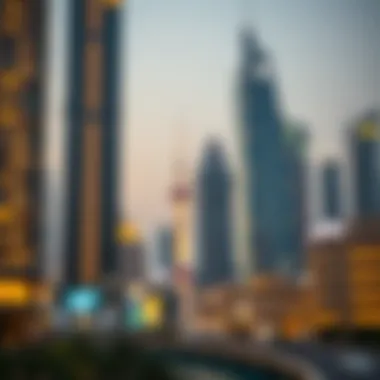

- Key Feature: The distinction between purchase options based simply on purity. Many buyers don't realize that even a small difference in purity alters resale value.
- Drawbacks: Lack of awareness about purity can lead to overpayment for lower quality silver.
Recognizing Authentic Products
As silver investment becomes more valued, the ability to recognize authentic products is increasingly important. Familiarizing oneself with trusted brands and hallmark stamps can save a lot of grief down the line. An authentic silver item will usually bear a stamp indicating its purity and sometimes the manufacturer's mark.
- Importance: Recognizing legitimacy protects your investment, ensuring that what you purchase holds true value.
- Complexity: The silver market has its fair share of counterfeit items, so understanding how to spot fake products becomes essential.
Being diligent and informed when navigating the silver market can mean the difference between sound investments and regretful purchases.
Ultimately, whether you choose local markets or online platforms, or whether you focus on purity or authentication, preparing yourself with the right knowledge will enhance your connection to the silver market in Dubai. This understanding is what enables investors to make choices that not only enrich their portfolios but also ensure both quality and satisfaction.
Investment Considerations
Investing in silver carries its own set of intricacies and nuances. Therefore, it is crucial to understand the various elements that come into play when considering silver as part of your investment portfolio. With the current price trends in Dubai being at the forefront of international interest, having clear insights can help investors navigate effectively. This section delves into the vital pros and cons of investing in silver, along with strategic approaches for both long-term and short-term investments, helping buyers decide how to position themselves in the market.
Pros and Cons of Investing in Silver
Investing in silver can present a mixed bag of advantages and drawbacks. Below is a breakdown of key points to consider:
Pros:
- Hedge Against Inflation: Silver is often seen as a reliable store of value, especially during economic turmoil. Many investors turn to precious metals to protect their wealth from depreciating currency values.
- Liquid Market: There is a robust market for silver, and liquidity can be readily found. Whether you're looking to sell in Dubai's local markets or online platforms, transactions are generally smooth compared to less common assets.
- Diverse Applications: Silver isn't merely a speculative investment; its industrial applications in electronics, solar energy, and medical devices give it intrinsic value.
- Low Entry Costs: Unlike gold, silver is relatively affordable. Investors can start with smaller amounts, making it accessible to a broader audience.
Cons:
- Market Volatility: The price of silver can fluctuate wildly. External factors including economic forecasts or geopolitical tensions can cause significant price swings, adding risk.
- Storage and Insurance Costs: Owning physical silver necessitates secure storage. This could lead to additional expenses, such as insurance.
- Lower Returns than Gold: While silver can provide steady returns, it often does not match the performance of gold, particularly during bull markets.
- Market Perception: Silver can sometimes be viewed as a secondary asset. For some investors, this perception may demean its investment allure compared to gold or other commodities.
Long-Term vs. Short-Term Investment Strategies
The approach one takes when investing in silver can significantly impact overall results. Evaluating your objectives, risk tolerance, and market conditions is vital before deciding on a strategy.
Long-Term Strategies:
Adopting a long-term investment view in silver means purchasing when prices are favorable and holding on through market fluctuations. Here are a few points to consider:
- Cost-Averaging: By regularly investing over time, investors can mitigate the effects of volatility. This strategy allows you to buy more silver when prices dip and less when they rise, averaging your cost.
- Market Trends: Understanding historical trends helps predict long-term performance. Analyzing data can equip investors to make informed decisions.
- Storage Solutions: Secure methods are essential for holding physical silver in the long run, whether it involves vault services or safe investment accounts.
Short-Term Strategies:
On the other hand, if you’re planning for shorter-term gains, the following approaches may be beneficial:
- Market Timing: Knowing when to enter and exit the market can lead to quick profits. This requires a sharp eye on global and local events that influence silver prices.
- Trading Options: Using financial instruments like ETFs (Exchange-Traded Funds) allows quicker adjustments to market conditions without the need for physical ownership.
- Daily Market Analysis: Staying updated with daily price charts and expert opinions can help you capitalize on minor fluctuations.
Epilogue
In summing up the discussion on the current price of silver in Dubai, it becomes evident that understanding this precious metal's position in the local market is not just about numbers or trends; it’s about grasping the wider context that shapes these factors. This article has elaborated on several critical elements that impact silver prices, including economic stability, local demands, and global market dynamics. Each of these plays a pivotal role in influencing current pricing strategies for investors and casual buyers alike.
Summary of Key Insights
Key Insights:
- Market Sensitivity: Silver prices in Dubai are impacted by both local economic conditions and international market trends, resulting in a constantly fluctuating price per gram.
- Investment Viability: Decisions to buy silver should consider both the immediate and long-term perspectives, making it essential to weigh the pros and cons.
- Quality Assessment: When purchasing silver, understanding purity levels and recognizing authentic products can significantly affect the overall value.
These insights serve to inform potential investors and buyers, providing them with a framework for making educated decisions in an often volatile market. The comparative values of silver versus gold, along with local vs. global factors, offer a rich tapestry of knowledge for effective navigation.
Future Predictions for Silver Prices
Looking ahead, predictions about silver prices in Dubai can be influenced by various anticipated scenarios. Possible catalysts include:
- Economic Recovery Post-Pandemic: Should the global economy continue to recover from the impacts of COVID-19, increased industrial demand could push silver prices higher.
- Technological Advancements: The growth in technologies such as solar energy and electric vehicles might lead to an uptick in silver usage, which could affect pricing positively.
- Geopolitical Instabilities: Tensions in global relations could disrupt supply chains, impacting overall availability and causing prices to rise.
As a result, keeping a close eye on both local and global developments will be crucial for anyone involved in the silver market. By synthesizing these elements, investors will likely find opportunities to adjust their strategies accordingly, ensuring they remain ahead of the curve in Dubai's fascinating silver landscape.







